Philippe Sehier
Localization Accuracy Improvement in Multistatic ISAC with LoS/NLoS Condition using 5G NR Signals
Dec 23, 2024



Abstract:Integrated sensing and communication (ISAC) is anticipated to play a crucial role in sixth-generation (6G) mobile communication networks. A significant challenge in ISAC systems is the degradation of localization accuracy due to poor propagation conditions, such as multipath effects and non-line-of-sight (NLoS) scenarios. These conditions result in outlier measurements that can severely impact localization performance. This paper investigates the enhancement of target localization accuracy in multistatic ISAC systems under both line-of-sight (LoS) and NLoS conditions. We leverage positioning reference signal (PRS), which is currently employed in fifth-generation (5G) new radio (NR) for user equipment (UE) positioning, as the sensing signal. We introduce a novel algorithm to improve localization accuracy by mitigating the impact of outliers in range measurements, while also accounting for errors due to PRS range resolution. Eventually, through simulation results, we demonstrate the superiority of the proposed method over previous approaches. Indeed, we achieve up to 28% and 20% improvements in average localization error over least squares (LS) and iteratively reweighted least squares (IRLS) methods, respectively. Additionally, we observe up to 16% and 13% enhancements in the 90th percentile of localization error compared to LS and IRLS, respectively. Our simulation is based on 3rd Generation Partnership Project (3GPP) standards, ensuring the applicability of our results across diverse environments, including urban and indoor areas.
Superposition of PRS and PDSCH for ISAC System: Spectral Efficiency Enhancement and Range Ambiguity Elimination
Sep 30, 2024



Abstract:From the telecommunication companies' perspective, the preference for integrated sensing and communication (ISAC) for sixth-generation (6G) is to enhance existing infrastructure with sensing capabilities while minimizing network alterations and optimizing available resources. This prompts the investigation of ISAC leveraging the existing infrastructure of fifth-generation (5G) new radio (NR) signals as defined by the 3rd generation partnership project (3GPP). Additionally, improving spectral efficiency is crucial in scenarios with high demand for both communication and sensing applications to maintain the required quality of service (QoS). To address these challenges, we propose the superposition of the physical downlink shared channel (PDSCH) for communication and the positioning reference signal (PRS) for sensing with proper power allocation. Furthermore, we propose a novel algorithm to reduce the interference for data decoding caused by PRS. Moreover, we introduce the joint exploitation of PRS and demodulation reference signal (DMRS) to prevent range ambiguity in the form of ghost targets. Through simulation analysis, we demonstrate the effectiveness of integrating PDSCH and PRS symbols within a unified resource grid. Our results show that the introduced approaches not only eliminate range ambiguity when sensing targets from gNBs but also enhance spectral efficiency by reducing interference between PRS and PDSCH. Simulation results show throughput enhancement and up to 57% improvement in bit error rate (BER). This paves the way for supporting sensing applications in the forthcoming network generation.
Doppler Ambiguity Elimination Using 5G Signals in Integrated Sensing and Communication
Aug 02, 2024Abstract:The industrial point of view towards integrated sensing and communication (ISAC), the preference is to leverage existing resources and fifth-generation (5G) infrastructure to minimize deployment costs and complexity. In this context, we explore the utilization of current 5G new radio (NR) signals aligned with 3rd generation partnership project (3GPP) standards. Positioning reference signals (PRS) for sensing and physical downlink shared channel (PDSCH) for communication have been chosen to form an ISAC framework. However, PRS-based sensing suffers from Doppler ambiguity when the Doppler frequency shift is severe. To address this challenge, we introduce a novel method within the ISAC system that leverages the demodulation reference signal (DMRS) present in PDSCH to eliminate Doppler ambiguity. Furthermore, we formulate a resource allocation problem between PRS and PDSCH to achieve a Pareto optimal point between communication and sensing without Doppler ambiguity. Through simulations and analysis, we demonstrate the effectiveness of our proposed method on joint DMRS-PRS exploitation in mitigating Doppler ambiguity and the efficiency of the resource allocation scheme in achieving Pareto optimality for ISAC within a 5G NR framework.
Leveraging PRS and PDSCH for Integrated Sensing and Communication Systems
Aug 02, 2024



Abstract:From the industrial standpoint on integrated sensing and communication (ISAC), the preference lies in augmenting existing infrastructure with sensing services while minimizing network changes and leveraging available resources. This paper investigates the potential of utilizing the existing infrastructure of fifth-generation (5G) new radio (NR) signals as defined by the 3rd generation partnership project (3GPP), particularly focusing on pilot signals for sensing within the ISAC framework. We propose to take advantage of the existing positioning reference signal (PRS) for sensing and the physical downlink shared channel (PDSCH) for communication, both readily available in 5G NR. However, the use of PRS for sensing poses challenges, leading to the appearance of ghost targets. To overcome this obstacle, we propose two innovative approaches for different PRS comb sizes within the ISAC framework, leveraging the demodulation reference signal (DMRS) within PDSCH to eliminate ghost targets. Subsequently, we formulate a resource allocation problem between PRS and PDSCH and determine the Pareto optimal point between communication and sensing without ghost targets. Through comprehensive simulation and analysis, we demonstrate that the joint exploitation of DMRS and PRS offers a promising solution for ghost target removal, while effective time and frequency resource allocation enables the achievement of Pareto optimality in ISAC.
Distributed Intelligent Integrated Sensing and Communications: The 6G-DISAC Approach
Feb 28, 2024Abstract:This paper introduces the concept of Distributed Intelligent integrated Sensing and Communications (DISAC), which expands the capabilities of Integrated Sensing and Communications (ISAC) towards distributed architectures. Additionally, the DISAC framework integrates novel waveform design with new semantic and goal-oriented communication paradigms, enabling ISAC technologies to transition from traditional data fusion to the semantic composition of diverse sensed and shared information. This progress facilitates large-scale, energy-efficient support for high-precision spatial-temporal processing, optimizing ISAC resource utilization, and enabling effective multi-modal sensing performance. Addressing key challenges such as efficient data management and connect-compute resource utilization, 6G- DISAC stands to revolutionize applications in diverse sectors including transportation, healthcare, and industrial automation. Our study encapsulates the project vision, methodologies, and potential impact, marking a significant stride towards a more connected and intelligent world.
Towards Distributed and Intelligent Integrated Sensing and Communications for 6G Networks
Feb 18, 2024



Abstract:This paper introduces the distributed and intelligent integrated sensing and communications (DISAC) concept, a transformative approach for 6G wireless networks that extends the emerging concept of integrated sensing and communications (ISAC). DISAC addresses the limitations of the existing ISAC models and, to overcome them, it introduces two novel foundational functionalities for both sensing and communications: a distributed architecture and a semantic and goal-oriented framework. The distributed architecture enables large-scale and energy-efficient tracking of connected users and objects, leveraging the fusion of heterogeneous sensors. The semantic and goal-oriented intelligent and parsimonious framework, enables the transition from classical data fusion to the composition of semantically selected information, offering new paradigms for the optimization of resource utilization and exceptional multi-modal sensing performance across various use cases. This paper details DISAC's principles, architecture, and potential applications.
Smart Channel State Information Pre-processing for Joint Authentication and Secret Key Distillation
Jun 01, 2022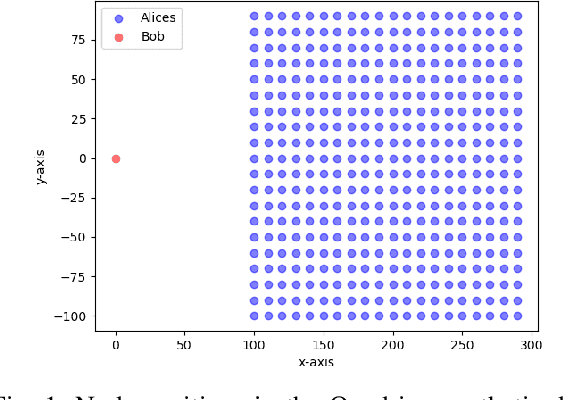
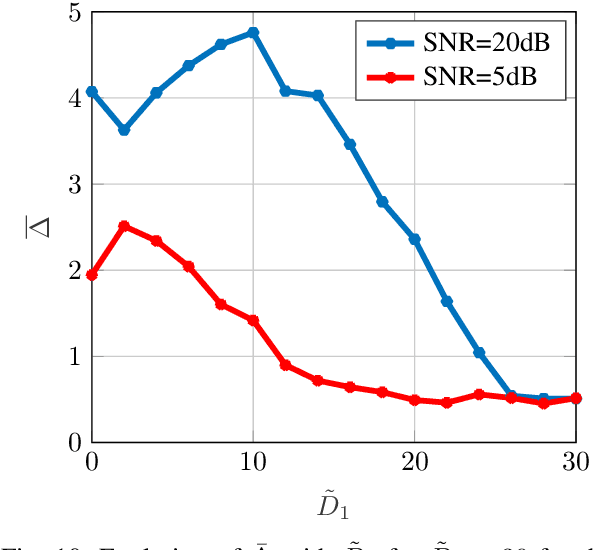
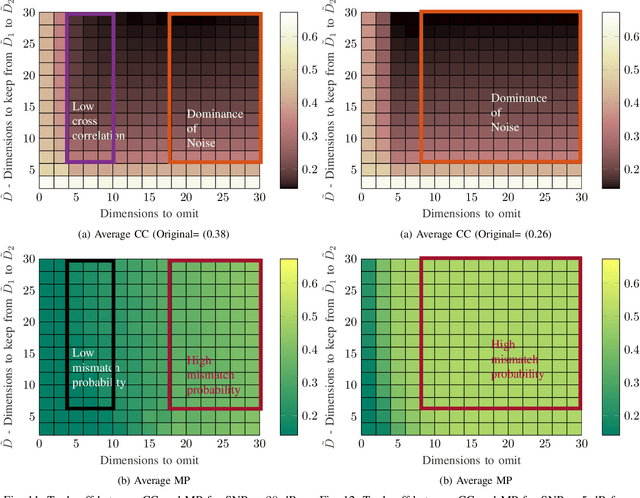
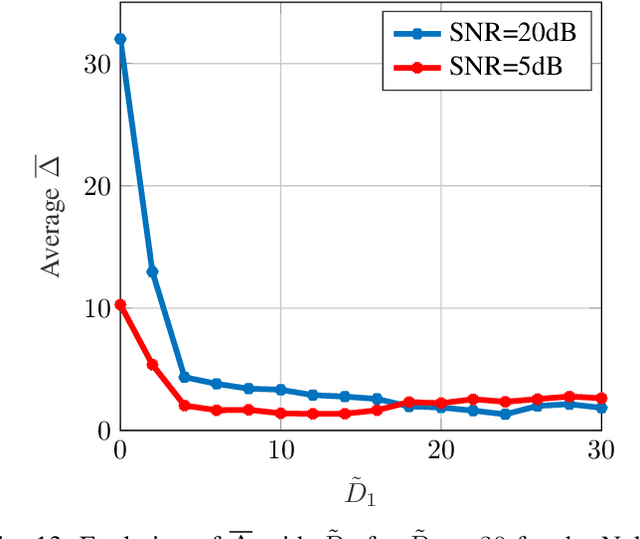
Abstract:While the literature on RF fingerprinting-based authentication and key distillation is vast, the two topics have customarily been studied separately. In this paper, starting from the observation that the wireless channel is a composite, deterministic / stochastic process, we propose a power domain decomposition that allows performing the two tasks simultaneously. We devise intelligent pre-processing schemes to decompose channel state information (CSI) observation vectors into "predictable" and "unpredictable" components. The former, primarily due to large-scale fading, can be used for node authentication through RF fingerprinting. The latter, primarily due to small-scale fading, could be used for semantically secure secret key generation (SKG). To perform the decomposition, we propose: (i) a fingerprint "separability" criterion, expressed through the maximisation of the total variation distance between the empirical fingerprint measures; (ii) a statistical independence metric for observations collected at different users, expressed through a normalised version of the $d$-dimensional Hilbert Schmidt independence criterion (dHSIC) test statistic. We propose both explicit implementations, using principal component analysis (PCA) and kernel PCA and black-box, unsupervised learning, using autoencoders. Our experiments on synthetic and real CSI datasets showcase that the incorporation of RF fingerprinting and SKG, with explicit security guarantees, is tangible in future generations of wireless.
Context-Aware Security for 6G Wireless The Role of Physical Layer Security
Jan 05, 2021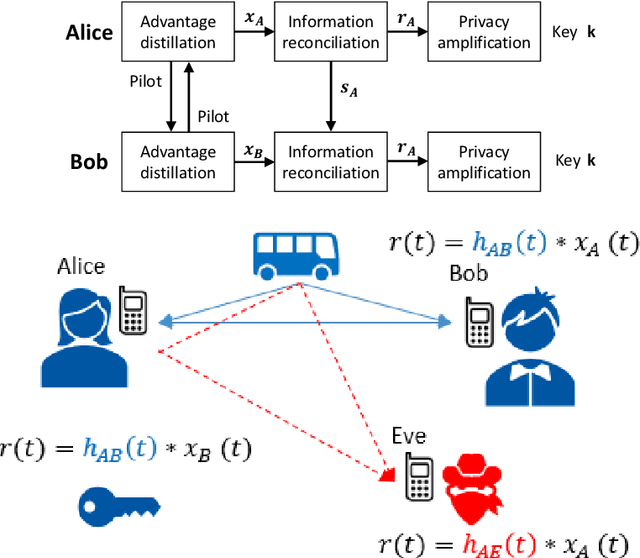
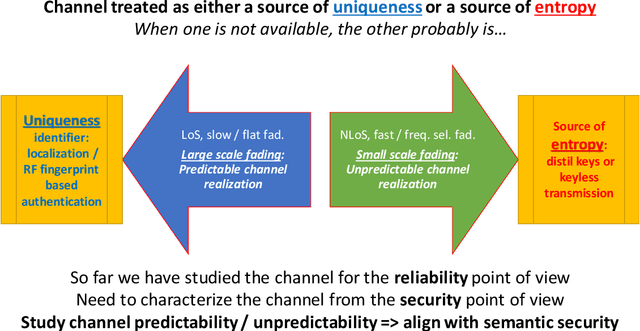
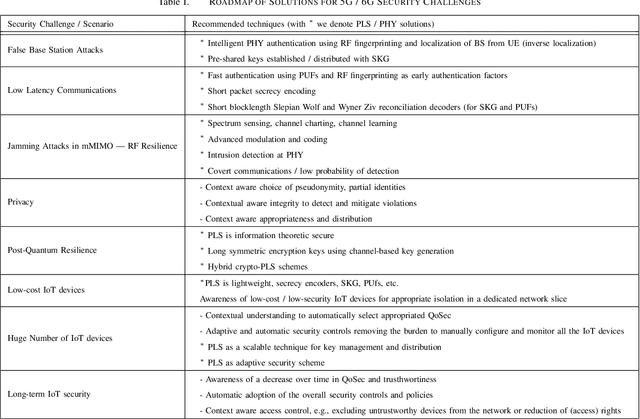
Abstract:Sixth generation systems are expected to face new security challenges, while opening up new frontiers towards context awareness in the wireless edge. The workhorse behind this projected technological leap will be a whole new set of sensing capabilities predicted for 6G devices, in addition to the ability to achieve high precision localization. The combination of these enhanced traits can give rise to a new breed of context-aware security protocols, following the quality of security (QoSec) paradigm. In this framework, physical layer security solutions emerge as competitive candidates for low complexity, low-delay and low-footprint, adaptive, flexible and context aware security schemes, leveraging the physical layer of the communications in genuinely cross-layer protocols, for the first time.
Deep Learning Assisted CSI Estimation for Joint URLLC and eMBB Resource Allocation
Mar 12, 2020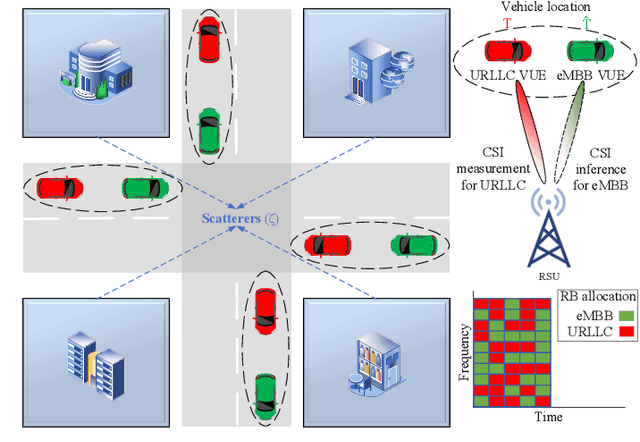

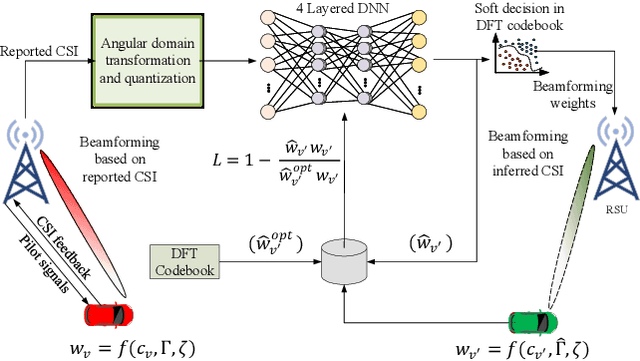

Abstract:Multiple-input multiple-output (MIMO) is a key for the fifth generation (5G) and beyond wireless communication systems owing to higher spectrum efficiency, spatial gains, and energy efficiency. Reaping the benefits of MIMO transmission can be fully harnessed if the channel state information (CSI) is available at the transmitter side. However, the acquisition of transmitter side CSI entails many challenges. In this paper, we propose a deep learning assisted CSI estimation technique in highly mobile vehicular networks, based on the fact that the propagation environment (scatterers, reflectors) is almost identical thereby allowing a data driven deep neural network (DNN) to learn the non-linear CSI relations with negligible overhead. Moreover, we formulate and solve a dynamic network slicing based resource allocation problem for vehicular user equipments (VUEs) requesting enhanced mobile broadband (eMBB) and ultra-reliable low latency (URLLC) traffic slices. The formulation considers a threshold rate violation probability minimization for the eMBB slice while satisfying a probabilistic threshold rate criterion for the URLLC slice. Simulation result shows that an overhead reduction of 50% can be achieved with 12% increase in threshold violations compared to an ideal case with perfect CSI knowledge.
 Add to Chrome
Add to Chrome Add to Firefox
Add to Firefox Add to Edge
Add to Edge